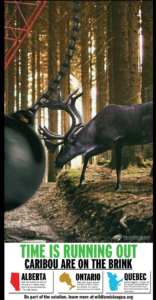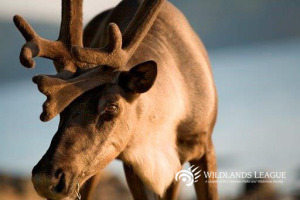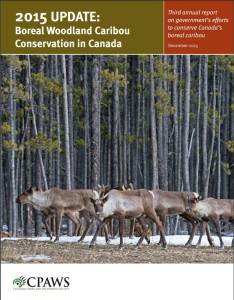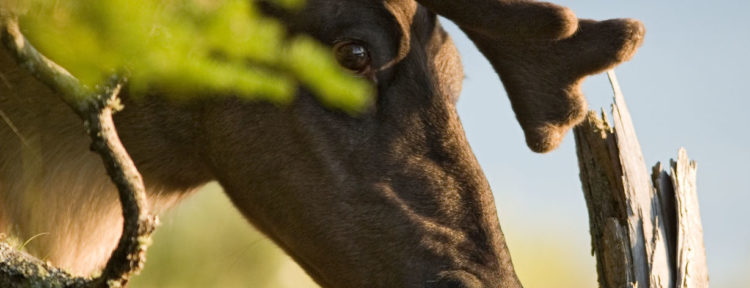 Have you seen our full page ad in the Globe and Mail on boreal caribou? Boreal caribou (Rangifer tarandus caribou) is one of Canada’s most iconic species. It is classified as threatened nationally under the Species at Risk Act and threatened in Ontario under the Endangered Species Act, 2007. This means that it is “likely to become endangered if nothing is done to reverse the factors leading to its extirpation or extinction”.
Have you seen our full page ad in the Globe and Mail on boreal caribou? Boreal caribou (Rangifer tarandus caribou) is one of Canada’s most iconic species. It is classified as threatened nationally under the Species at Risk Act and threatened in Ontario under the Endangered Species Act, 2007. This means that it is “likely to become endangered if nothing is done to reverse the factors leading to its extirpation or extinction”.
Wildlands League has been sounding the alarm on boreal caribou for a number of years. Caribou decline is due largely to human destruction of their habitat. And it is this rate that has scientists and others worried. Often described as bellwethers of the Boreal Forest’s health, caribou thrive in landscapes that are largely untouched by industrial development, are highly sensitive to disturbances and have a low reproductive rate.
In our latest ad, we draw attention to local caribou populations in three parts of Canada: Alberta, Ontario and Québec.
- The Alberta government just released its draft plan for the Little Smoky range-arguably one of the most endangered ranges in Canada with a 95% disturbance level. Not only does the draft plan fail to plan for the recovery of habitat or restrict the footprint of forestry and energy industries, it encourages the sale of new oil and gas leases, and targets extreme population management tools. What does it say about us when we can’t stop our insatiable appetite for resources in a range that is already widely out balance? Our CPAWS colleagues in Northern Alberta are working hard to conserve this herd and all caribou in Alberta. You can learn more about their important efforts here.

- Since 2008, Ontario has failed to bring in habitat protection for caribou. This failure is inconsistent with what the Ontario Legislature intended in the Endangered Species Act, 2007, which envisioned habitat protection no later than July 2013. The province has a weak range management policy. And it has an Endangered Species Act and yet gutted protections in 2013 for each threatened and endangered species (incl. boreal caribou). You can count on us at CPAWS Wildlands League to stand up for threatened species like caribou. We don’t just talk. We roll up our sleeves and go to where the action is whether it’s Thunder Bay, Timmins, Hearst or Moose Factory. We seek solutions by working collaboratively with industry, Indigenous communities and municipalities. Learn more about our work here, here and here.
- Québec recently published a caribou plan and although it builds on scientific recommendations, it lacks concrete conservation actions. In the meantime, the northward expansion of logging in Québec’s boreal forest threatens caribou’s last remaining habitat. Our CPAWS colleagues in Québec, known as SNAP in French, are standing up for caribou. Urgent protection is needed of the White Moutains, a 10,000 km2 refuge for several herds of caribou straddling the Saguenay-Lac-St-Jean, the Cote-Nord and Nord-du-Québec regions. SNAP also works with the forestry company, Tembec, and their work in Quebec shows that it is possible to protect caribou AND jobs. Learn more here.
 In case you are wondering about British Columbia, Manitoba and other provinces and territories with pressing caribou issues too, in its third annual review of government action to conserve Canada’s boreal woodland caribou, CPAWS looked at all the jurisdictions and found there has been spotty progress – with too few jurisdictions showing leadership in protecting the species that has long graced our 25-cent piece. You can read the review here.
In case you are wondering about British Columbia, Manitoba and other provinces and territories with pressing caribou issues too, in its third annual review of government action to conserve Canada’s boreal woodland caribou, CPAWS looked at all the jurisdictions and found there has been spotty progress – with too few jurisdictions showing leadership in protecting the species that has long graced our 25-cent piece. You can read the review here.
And with respect to the federal government, it too has an important role to play in providing legal protections for caribou when provinces and territories fail to protect critical habitat. We’ll have more to say about this in the coming weeks and months.
Timing is running out. We can’t let our insatiable appetite for resources drive caribou to extinction. It is vital that effective, science-based conservation measures be built into development plans and that action plans for each of the ranges in Canada be completed.

Be part of the solution for caribou in Canada. Get in touch with us or with any of our CPAWS colleagues.

